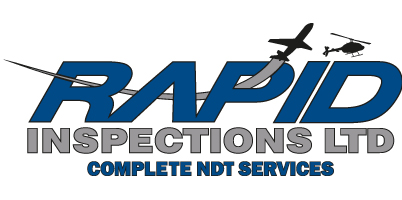
Services
Non Destructive Testing (NDT)
A method of testing parts or materials for cracks or flaws without damaging the piece.
Liquid Penetrant Inspection (LPI)
Definition: using a penetrating liquid (fluorescent) to seep into a surface flaw thus providing a visible indication (black light).
Limitations
Only detects flaws that are open to the surfaces, generally used for aluminum materials.
Magnetic Particle Inspection (MPI)
Definition: using electrical current to create a magnetic field in an object while magnetic particles indicate where the field has been broken by a flaw.
Limitations
Can only be used on metal that can be magnetized (ferrous).
Eddy Current Inspection (ET)
Definition: using electrical current in a coil to induce eddy currents into a part. Indications reveal defects that alter the path of induced currents.
Limitations
All tests, require a calibration standard. Inspection depth of less that one inch and does not give physical shape.
Ultrasonic Inspection (UT)
Definition: Using ultrasonic sound vibrations to penetrate material. Sound can be measured when reflected back from defects. Generally used for determining thickness, corrosion monitoring, and weld inspection.
Limitations
All tests require a calibration standard and interpretation of test results require highly trained personnel.
X-Ray Inspection
Definition: Using electromagnetic rays to penetrate material having results recorded on film.
Limitations
Potential safety hazards to personnel . Requires iridium source for pipe welds which unfortunately Rapid Inspections does not carry.
